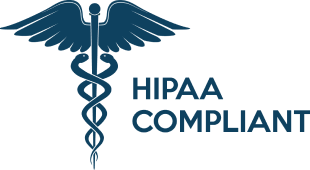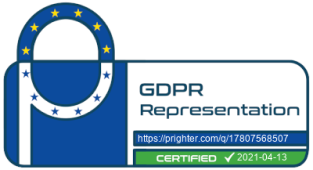3 Ways Remote Mental Stress and Vital Signs Monitoring Benefit Insurers
Over the past two decades, technological advancements and integration of artificial intelligence by the insurance industry have enabled extensive changes in underwriting, policy distribution, and pricing. Experts speculate that these advancements will precipitate a major shift in the insurance industry. Two developments that are likely to gain traction among insurers looking to increase processing speed, reduce costs of health checks and enhance customer experience are straight-through processing (STP) and dynamic premium pricing.
Currently, however, both STP and dynamic premium pricing are not in widespread use due to the challenge of accessing relevant client health data in a way that is reliable, accessible and cost-efficient. Fortunately, new monitoring solutions are offering ways to access insights into client health and behaviors. One form of data made accessible by innovative solutions and particularly helpful to insurers are vital signs levels, measurements that indicate the status of the body’s most basic functions.
To watch the webinar that inspired this blog post, please click here.
How Do Vital Signs Levels Affect Risk Profiles?
Recent medical studies have shown that HRV, HRH, and Mental stress levels are all closely associated with mortality and morbidity risk. A meta-analysis in the Canadian Medical Association Journal examining over 46 studies revealed an association between a resting heart rate of above 80 bpm and a higher risk of both all cause and cardiovascular mortality, and low HRV has been associated with increased mortality and a greater risk of cardiac events among the general population.
Mental Stress Levels: Critical Health Indicators
Vital signs can also be used to calculate client stress levels, which have been closely associated with health problems like heart disease, diabetes, high blood pressure and obesity. A recent statement by the American Heart Association emphasized the connection between mental stress levels and heart health. According to the statement, numerous studies demonstrate “clear associations between psychological health and CVD (cardiovascular disease) risk” and indicate that “psychological health can positively or negatively affect cardiovascular risk factors, risk for CVD events, and cardiovascular prognosis over time.” The statement concludes that “there is increasing evidence that psychological health may be causally linked to biological processes and behaviors that contribute to and cause CVD.”
So How Can Insurers Leverage Remote Stress and Vital-signs Monitoring to Enhance Strategies?
- Broaden straight-through processing candidate pool
Offering clients and insurers the benefits of speed and better customer experience, straight-through processing is likely to gain priority in the industry. Currently based on static, historical data on factors like age or insurance amount, straight-through processing is limited to a pool of candidates that display minimal risk levels, resulting in added processing time and medical exam costs for remaining clients. Among the remaining clients, however, is a class of candidates that only require “mini-exams.” Using real-time health monitoring, insurers can restructure STP models in accordance with remotely accessed vital signs and mental stress data and turn this class of clients into candidates as well.
- Identify flags among seemingly healthy STP candidates
An additional problem with current STP strategies is reliance on questionnaires. Though questionnaires provide meaningful insight into client health, the data they provide is sometimes inaccurate or short of information critical for accurate risk assessment. In a recent study, patients who checked “no” to all questions in a cardiac-health questionnaire, possessed higher mortality rates. Bolstering questionnaires with vital signs and mental stress levels remote monitoring capabilities would enable actuaries to flag risks and identify health problems unknown to clients.
- Dynamically price premiums
With growing demand for personalized premiums, dynamic pricing is poised to obtain popularity among insurers. Using remote, continuous health monitoring, insurers can offer clients pricing that adjusts in response to client behavior and real-time health status. In addition to providing clients with motivation to live healthier lifestyles and empowering them with control over pricing, using real-time health data to dynamically price premiums would enable insurers to lower potential risk and make more precise predictions.
Binah.ai’s Mental Stress and Vital signs Monitoring
Binah.ai’s software-based mental stress and vital signs monitoring provides a way for insurers to extract heart rate, heart rate variability, oxygen saturation, and mental stress levels remotely, quickly and with extraordinary ease, using a device clients already have. From any location and at any time, insurers and clients can get insight into real-time health status in just under a minute by having clients simply look at the device’s camera. Delivered in an easy-to-integrate SDK package, Binah.ai’s technology runs on iPhones, iPads, Android phones and Windows 10 desktops and laptops – making it widely available and easy to implement, use and access.
Digitally collected and analyzed health data like vital signs and mental stress levels can play a crucial role in helping insurance companies automate and accelerate underwriting and processing. By using real-time health data to make more accurate risk assessments, offer more clients the benefits of straight-through processing and implement dynamic premium pricing, insurers can improve their ability to meet customer needs for fast, digitalized, personalized services.
Sources:
Dekker JM, Crow RS, Folsom AR, Hannan PJ, Liao D, Swenne CA, Schouten EG. Low heart rate variability in a 2-minute rhythm strip predicts risk of coronary heart disease and mortality from several causes: the ARIC Study. Atherosclerosis Risk In Communities. Circulation. 2000 Sep 12;102(11):1239-44. doi: 10.1161/01.cir.102.11.1239. PMID: 10982537.
Levine GN, Cohen BE, Commodore-Mensah Y, Fleury J, Huffman JC, Khalid U, et al. Psychological Health, Well-Being, and the Mind-Heart-Body Connection: A Scientific Statement From the American Heart Association. Circulation. 2021;143(10).
Zhang D, Shen X, Qi X. Resting heart rate and all-cause and cardiovascular mortality in the general population: a meta-analysis. CMAJ. 2016 Feb 16;188(3):E53-E63. doi: 10.1503/cmaj.150535. Epub 2015 Nov 23. PMID: 26598376; PMCID: PMC4754196.

 close
close





